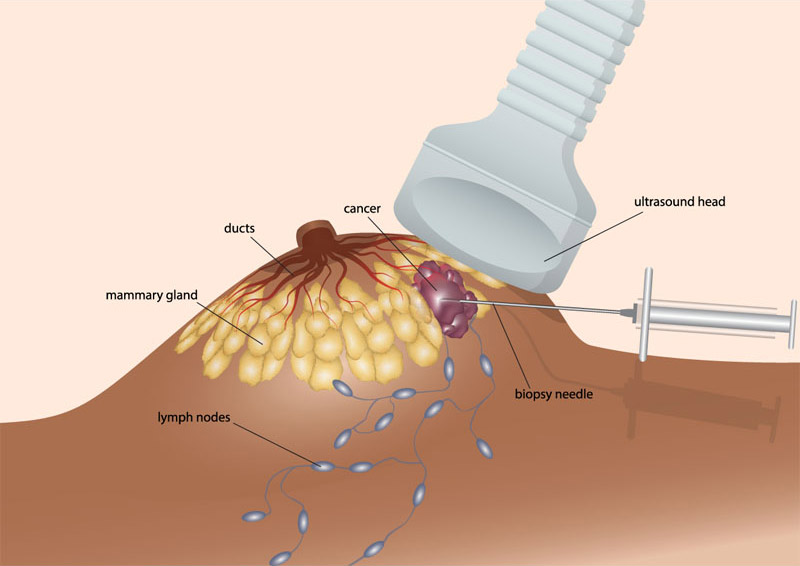An Animated Patient’s Guide to Breast Cancer
and Metastatic Disease
This resource is intended to educate and empower individuals who are facing the challenges that come with being diagnosed with breast cancer and to raise awareness about the disease. You will find expert advice to help you discuss key issues with your health care provider. Easy-to-understand animations with audio narration, expert video explanations, slide shows, and educational downloads are available to you.
We hope this site will be of use to you, but it is not a substitute for the medical advice of your doctor. If you have questions or feedback, please let us know. By using this site, you agree to the terms of use and that you have reviewed the disclosures.
What is Breast Cancer?
The human body is composed of cells. Cancer transpires when the deoxyribonucleic acid (DNA) inside of the cells is damaged. DNA is found inside of every cell and controls the cell’s functions. Normal cells can repair their damaged DNA, or they die. Cancer cells do not repair their damaged DNA nor die; they continue to replicate and create more cancer cells.
The result of these cancer cells multiplying generates the growth of tumors in the breast that develop slowly over time. Not all tumors are dangerous; some are benign and are rarely life-threatening, whereas some tumors are malignant, meaning they are aggressive and can grow rapidly.
Over 50 percent of breast cancer cases originate in the milk ducts of the breast. Learn more about the anatomy of the breast.
Signs of Breast Cancer May Include
- A lump in the breast or armpit
- A change in breast shape or size
- Nipple changes or discharge
- Skin changes, including redness, inflammation or dimpling like the skin of an orange
I Found a Lump - Is it Cancer?
The differences between benign and malignant breast lumps
Benign breast lumps or growths found in breasts are usually not cancerous nor life-threatening. If your doctor is suspicious about a lump, they may need to do a biopsy to determine if it is malignant. A biopsy is a surgical procedure in which all or part of the tumor is removed. The cells from the tumor are then examined to see if they are benign or malignant.
Types of benign lumps
- Fibroadenomas
- Intraductal papilloma’s
Both types of growths are not life-threatening and cannot spread to other parts of the body. However, such benign conditions may put women at greater risk of developing breast cancer.
Malignant breast lumps or tumors are cancerous. They can invade the tissue which surrounds them. Malignant tumors are classified by grades. If you can feel the lump in your breast, it may feel hard or as if your breast is thicker in that spot. If you find a lump before a mammogram, it is crucial that you see a healthcare professional to have it further examined. Any lump should be looked at with caution until it is determined if it is benign or malignant.
Tumor grades describe how tumor cells and tissue look under a microscope. It is based on how different a cancer cell looks from a normal, healthy cell, and can indicate how likely the cancer is to spread.
- GX (No grade): The tumor grade is undetermined.
- G1 (Low grade): Tumor cells and tissue look well-differentiated or normal.
- G2 (Intermediate grade): Tumor cells and tissue look moderately well-differentiated or close to normal.
- G3 (High Grade): Tumor cells and tissue look poorly differentiated and do not look normal.
- G4 (High Grade): Tumor cells and tissue have no differentiation and do not look normal.

Male Breast Cancer
Breast cancer is not just a “women’s disease.” Although uncommon, breast cancer can occur in men. Approximately 1% of all breast cancers can be attributed to men, mainly those between the ages of 60 and 70. Data show that breast cancer cases in men are becoming more prominent, with a 26 percent increase from 1975 to 2010.
Male Breast Cancer Facts
According to the American Cancer Society:
- This year there will be approximately 2,350 new cases of invasive breast cancer diagnosed in men.
- Approximately 440 men will die from breast cancer.
- A man’s lifetime risk of developing breast cancer is about 1 in 1,000.
Risk Factors for Male Breast Include:
- Radiation Exposure
- Hormonal imbalances, such as high estrogen or prolactin levels
- Family history of breast cancer in female relatives, especially if they carry the BRCA2 gene.
Diagnosing Male Breast Cancer:
- Physical exam and history
- Clinical breast exam (CBE)
- Ultrasounds
- Magnetic Resonance Imaging (MRI)
- Blood tests
- Biopsy
Breast cancer in men most often results in a lump or tumor which can be felt. If you are a male and have found a lump, are experiencing any other breast abnormalities, or have a family history of breast cancer, it is important to report these to your doctor and have a discussion about your risk of developing breast cancer.

